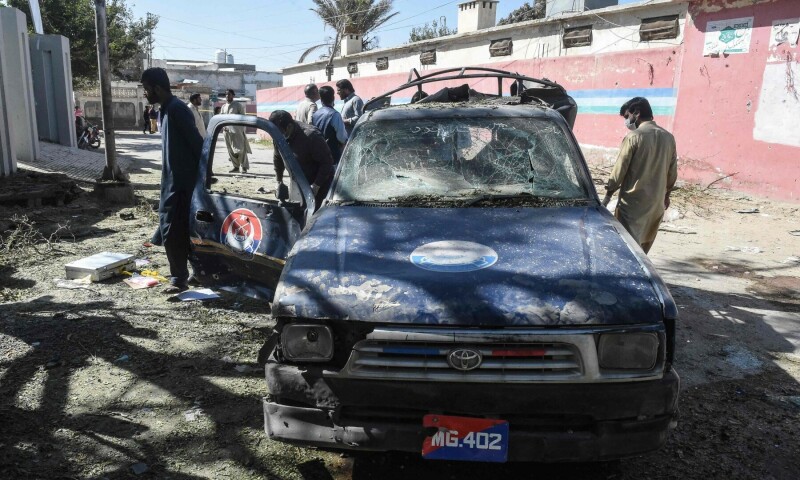
[ad_1]

The Quetta Counter Terrorism Department (CTD) has registered a terrorism case over yesterday’s Mastung blast that claimed the lives of eight people, including five children, and injured over 30, it emerged on Saturday.
An improvised explosive device (IED) planted in a motorbike was used to carry out the attack at School-Hospital Chowk in the Majeed Road area, officials said.
The IED was detonated near a girls’ school where students were coming in vans and rickshaws at a time when a police vehicle was passing through the area.
Officials said the target of the remote controlled blast was a police vehicle heading to Mastung district hospital to pick up polio vaccinators to escort them to different neighbourhoods as part of the nationwide immunisation drive being run from Oct 28 to Nov 3.
The eight deceased comprised five schoolchildren, a policeman and two civilians. No one has claimed responsibility for the blast as of yet.
The first information report (FIR), a copy of which is available with Dawn.com, was registered at around 3:15pm on Friday on the complaint of Mastung City Station House Officer (SHO) Abdul Fateh.
It said unidentified terrorists had “targeted innocent children and the public” via the blast.
According to the FIR, Bomb Disposal team head Rafiq Shah, after inspecting the incident site, noted that “seven to eight kilogrammes of explosive material and ball bearing” were used in the IED blast.
A loud blast was heard by a police team, which included Assistant Sub-inspector (ASI) Ali Ahmed, when it was on patrolling duty, the FIR said. It added that at the same time, they were informed that a blast had occurred at the Manzoor Shaheed Library at Masjid Road.
The police, the FIR added, saw a considerable number of children near the site of the blast. “Workers present in a police van, which was taking a police team to DHO hospital for polio duty, were martyred and injured.”
The FIR detailed that rickshaws, a wall of the Manzoor Shaheed Library and glass windows of the girls’ high school were damaged as a result of the explosion.
It named the eight people who were martyred and 30 who were injured.
The FIR invoked sections 7 (punishment for acts of terrorism) and 21(i) (aid and abetment) of the Anti-Terrorism Act 1997, as well as sections 3 (punishment for causing explosion likely to endanger life or property) and 4 (punishment for attempt to cause explosion or for making or keeping explosive with intent to endanger life or property) of the Explosive Substances’ Act 1908.
The case also invoked sections 302 (punishment of qatl-i-amd), 324 (attempt to commit qatl-i-amd), 427 (mischief causing damage to the amount of Rs50), 353 (assault or criminal force to deter public servant from discharge of his duty), 186 (obstructing public servant in discharge of public functions), and 120B (concealing design to commit offence punishable with imprisonment, if offence be not committed) of the Pakistan Penal Code.
The attack was widely condemned by leaders, with Prime Minister Shehbaz Sharif stating: “The attack on a school is the manifestation of terrorists’ animosity to education in Balochistan.”
Balochistan Chief Minister Mir Sarfaraz Bugti, in a statement on X, had condemned the blast saying it was “inhumane”.
He said terrorists had now “targeted innocent children along with poor labourers”, apparently referring to a recent attack that killed five security guards in Panjgur.
United Nations Children’s Fund (Unicef) also condemned the attack, emphasising the need to ensure the safety and protection of all children.
[ad_2]
Source link






